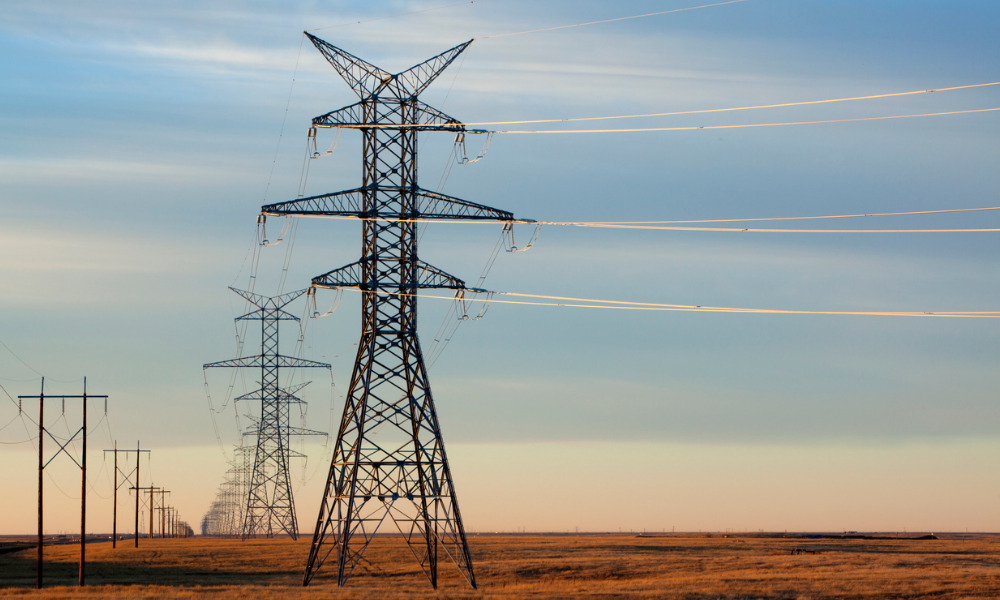- How is electricity regulated in Canada?
- What are the electricity regulations in Canada?
- Canadian Energy Regulator Act
- Clean Electricity Regulations
- Canadian Electrical Code
- Provincial energy laws
- Who implements electricity regulations in Canada?
- Electricity regulations: ensuring light stays on for Canadians
Keeping that light bulb turned on doesn’t just involve paying energy bills—it’s also wrapped around a lot of laws, such as the electricity regulations in Canada. But what are these regulations all about, and how do they affect millions of Canadians who depend on the power that electricity has been providing us?
How is electricity regulated in Canada?
Electricity regulation in Canada is governed both at the federal and the provincial level. Each level has its own jurisdiction regarding different aspects of electricity production, distribution, and consumption.
For the most part, Canadian electricity regulation can be summed up this way:
-
provincial level: primarily governs electricity regulation or the regulation of the electricity sector, since these governments regulate the types of power generation used in their own jurisdiction; this includes regulating electricity pricing and power rates, electricity generation, intra-provincial transmission, and distribution of electricity to consumers
-
federal level: regulates importation and exportation of electricity, and the designated international and inter-provincial transmission lines; also, the federal government regulates the nuclear generation sector, which is also a part of the electricity sector; the overall policymaking for the energy sector is also upon the federal government’s power
Part of Canada’s electricity regulation is the Canada’s Energy Future. This long-term energy outlook helps the government look at what the country's electricity system would look like in a net-zero world, among many other things.
Know about Canada’s Energy Future with this video:
Canada’s Energy Future is issued every year. Lear more about it by consulting with the Lexpert-ranked best energy lawyers for electricity in Canada.
What are the electricity regulations in Canada?
Since Canada’s electricity regulation is shared between the federal government and the provincial or territorial governments, it follows that laws and regulations for the electricity sector are found in both jurisdictions.
Here are some of the highlight electricity regulations in Canada:
- Canadian Energy Regulator Act
- Clean Electricity Regulations
- Canadian Electrical Code
- Provincial energy laws
Not to mention there are several regulations issued by the government agency that administers these laws and regulates the energy sector. We’ll discuss these laws and regulations below.
1. Canadian Energy Regulator Act
The Canadian Energy Regulator Act (CER Act) is the federal law which:
- established the Canada Energy Regulator (CER)
- ensure, among others, that power lines are constructed, operated, and abandoned in a safe and efficient manner
In establishing the CER, the CER Act provides for the positions and roles governing the CER, and their powers, duties, and functions.
Indigenous Peoples and electricity regulation
The CER Act provides that the rights of the Indigenous Peoples must be given full regard, as afforded to them by the Canadian Constitution. The law tasks the CER to consider any adverse effects of its decision, order, or recommendation on the rights of the Indigenous Peoples.
In effect, when electrical power lines are abandoned, consultations must be made not only with the affected public, but also with the participation of affected Indigenous Peoples. This is in the continuing recognition that energy laws and Indigenous Peoples law are interconnected and must be harmonized for the greater public benefit.
Violations under the CER Act
The CER Act has also imposed Administrative Monetary Penalties to be implemented by the CER. The CER can then promulgate regulations and penalties according to the violations committed under the CER Act.
Violations under the CER Act include:
- contravention of an order or a decision made by the CER
- failure to comply with any condition under an issued certificate, licence, permit, or authorization
Also, scattered across the CER Act are other prohibitions on specific matters. Violators may face civil liabilities or imprisonment, or both. This depends if the violator is liable for conviction on indictment or for summary conviction.
Regulation of power lines
Electricity regulation in Canada under the CER Act revolves around regulating power lines. A power line may either be:
-
international power line: facilities constructed or operated to transmit electricity from Canada to a place outside Canada, or vice versa
-
interprovincial power line: facilities constructed or operated to transmit electricity from one Canadian province to another
-
offshore power line: facilities constructed or operated to transmit electricity from an offshore renewable energy project to a Canadian province or a place outside Canada
It’s the responsibility of the CER to oversee these international and interprovincial power lines, their construction, and to pursue prohibitions related to these power lines. These prohibitions include:
- constructing power lines in Canadian navigable waters
- construction of power lines that may cause any ground disturbance
- abandonment of power lines, unless otherwise permitted by the CER
Regulation of offshore projects and power lines
Electricity regulation under the CER Act also includes regulation of offshore renewable energy projects and offshore power lines. For this, the CER can issue authorizations either:
-
before any offshore renewable energy project may be started
-
before any part of an offshore power line in a province may operate or be abandoned
Regarding the importation and exportation of electricity, the law empowers the CER to:
- issue permits or licences authorizing the exportation of electricity
- create the criteria to be considered in issuing these permits or licences
- issue electricity regulations for its importation and exportation
2. Clean Electricity Regulations
The Clean Electricity Regulations is a federal regulation, consolidating Canada’s primary goal in achieving a net-zero electricity grid starting 2035. It does this by shifting the reliance from non-renewable electricity producers (coal, natural gas, diesel, etc.) to renewable sources of “clean” electricity (hydro, wind, solar, etc.).
The Regulations plan to reduce greenhouse gas (GHG) emissions produced by the energy sector, while still ensuring affordable and consistent supply of electricity for Canadians. It is part of the 2030 Emissions Reduction Plan, which is Canada’s commitment to achieve the enhanced Paris Agreement target on net-zero emissions.
The draft Regulations was released in August 2023, and the final version was released in December 2024. It’s one of the regulations under the Canadian Environmental Protection Act, 1999 (CEPA 1999).
The release of draft Regulations
When the draft Regulations were released back in 2023, there were several oppositions, especially from the provinces to be affected. Learn more about the two sides of these Regulations with this video:
If you want to know about how the final Clean Electricity Regulations will impact your business, reach out to the best energy law firms for electricity in Canada as ranked by Lexpert.
Limits under the Clean Electricity Regulations
The Regulations aim that, by 2050, Canada will have a net-zero electricity system. To do this, the Regulations have set limits on carbon dioxide pollution from certain electricity generation units that use fossil fuels.
As to its applicability, the Regulations will only apply to electricity units that:
- have an electricity generation capacity of at least 25 megawatts (MW)
- generate electricity using fossil fuel
- are connected, directly or indirectly, to an electricity system, i.e. those that are regulated by the North American Electric Reliability Corporation (NERC)
If subjected to the Regulations, electricity generation units must limit its annual emissions according to two phases:
- before 2050: limit annual emissions to 65 t/GWh, subject to eligible offset credits
- after 2050: annual emissions must be reduced to zero, still subject to offset credits
Exemptions under the Regulations
However, not all electricity generation units are subject to Regulations. For instance, smaller units that are used for non-commercial purposes may be exempt from the Regulations, if they do not meet the minimum 25 MW capacity.
3. Canadian Electrical Code
The Canadian Electrical Code (CEC) is part of the electricity regulation which is individually adopted and implemented by the Canadian provinces and territories. The CEC is published by the Canadian Standards Association (CSA).
As used by electrical workers, the CEC governs electrical safety in installing and maintaining electrical equipment. This includes:
- electrical installation code
- electrical equipment standards
- specialized equipment guidelines
However, the adoption of the CEC may depend on each province, since they can adopt it entirely or adopt it but amend some parts of it. The CEC is generally implemented by the provincial or territorial energy regulating authorities.
4. Provincial energy laws
As to the things that they have jurisdiction over, the provinces and territories have enacted their own laws and electricity regulations for them. Here are some examples of these provincial electricity laws and regulations:
-
Ontario: the Electricity Act, 1998, along with the electricity regulations issued by the Ontario Energy Board (OEB)
-
British Columbia: the Clean Energy Act and the regulations of the British Columbia Utilities Commission (BCUC)
-
Alberta: the Electric Utilities Act, the Hydro and Electric Energy Act, the Renewable Electricity Act, and the regulations by the Alberta Utilities Commission (AUC)
Who implements electricity regulations in Canada?
At the federal level, there are two main government implementors of Canadian electricity regulations and laws:
- Environment and Climate Change Canada (ECCC)
- Canada Energy Regulator (CER)
These are in addition to provincial and territorial energy regulators and commissions, whose responsibility covers electricity regulations enacted under their own laws.
Environment and Climate Change Canada (ECCC)
The ECCC is the federal department that coordinates the overall policies and programs to preserve Canada’s environment and combat climate change. Flowing from this responsibility are the various electricity regulations that the ECCC issued, a stark example of which is the Clean Electricity Regulations.
The Clean Electricity Strategy
Another electricity regulation, or somehow of a policy, released by the ECCC is the Clean Electricity Strategy, which:
- is an industrial roadmap to build clean, reliable, and affordable electricity systems
- aims to make electricity as the energy of choice to power Canada’s national economies, and to decarbonize its electricity systems
Key players in the energy sectors should be aware of this Strategy, as this has a future impact on business by the time this is already implemented full blown.
Canada Energy Regulator (CER)
Born out of the CER Act, the CER is one of the government agencies responsible for electricity regulation in Canada. Among the many roles of the CER are to:
- enforce laws on the construction and operation of inter-provincial and international (import and export) power lines of energy utilities
- issue export permits or licences for transfer of electricity between Canada and other countries, such as the U.S.
- license companies or corporations engaged in these energy utilities (oil, gas, electricity)
- monitor electricity markets and developments in emerging technologies for a more efficient electricity industry
Again, the CER is in addition to the provincial and territorial regulators, as established by their respective laws on energy regulation. These provincial and territorial energy regulators implement rules and rates for the generation, transmission, and distribution of electricity in their own areas.
Electricity regulations: ensuring light stays on for Canadians
Canadian electricity regulation is shared between the federal and provincial or territorial governments. Key laws and regulations include the Canadian Energy Regulator Act, the Clean Electricity Regulations, and the Canadian Electrical Code. With the support of agencies like the CER and the ECCC, these regulations aim to ensure a safe, efficient, and increasingly clean electricity system for all Canadians. To learn more about these regulations, it would be a power move to consult with an energy lawyer for electricity.
Bookmark Lexpert’s Legal FAQs page to be updated on electricity regulations and for other articles on everyday Canadian laws.





